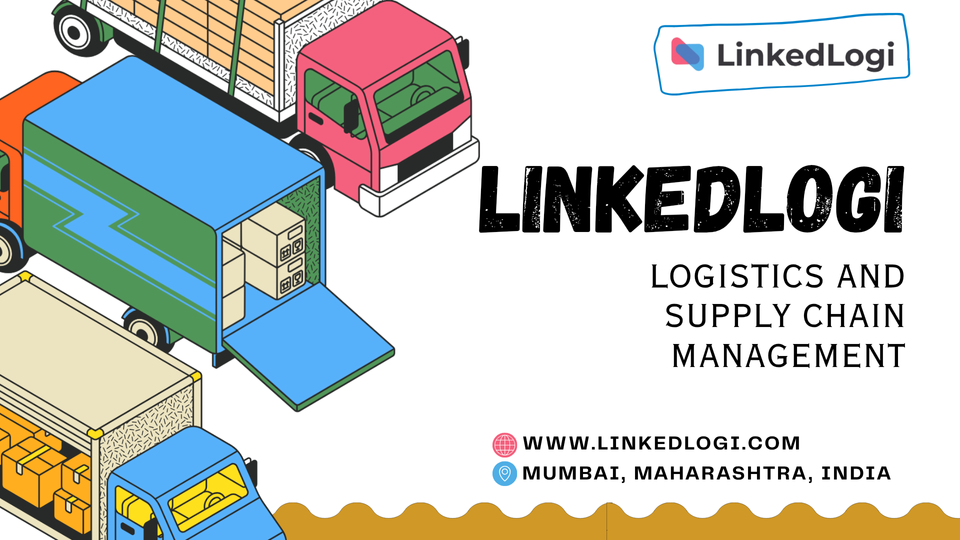Building the Digital Freight Infrastructure in India: Why Multimodal Logistics Platforms Are Important

India in recent years has taken significant steps in incrwever, the digital side of logistics, critical to increasing speed, visibility, and cost savings, remains in the early stages. A robust digital freight ecosystem is critical to supporting India's growing economy and its vision to become a world manufacturing and export hub. One of the major developments in this sector is the use of multimodal logistics platforms. These technology platforms consolidate various modes of transport, including road, rail, air, and sea, into a single technology-based supply chain. These platforms improve coordination across transport modes while also offering necessary transparency, efficiency, and financial control in the freight movement process.
The Need for a Digital Freight Infrastructure India's logistics industry makes up more than 14% of the GDP, but logistics costs are still among the highest in the world with fragmented operations, underutilized capacity, and a lack of real-time information. With increasing freight volumes owing to the rise of e-commerce, manufacturing, and exports, logistics inefficiency will increasingly be unsustainable. Electronic multimodal logistics platforms overcome these issues by being the nerve center for the movement of freight. They pool demand as well as supply of freight services, facilitate real-time tracking, optimize load capacity across widely varying vehicles and routes, and automate documentation and compliance processes. This is where logistics and supply chain management practices and logistics management systems add value to India's trade landscape. Government initiatives set through the PM Gati Shakti National Master Plan and the Unified Logistics Interface Platform (ULIP) have set a strong foundation. Private companies and technology startups, including logistics companies in India exploring logistics business ideas, are then building on top of this vision by creating digital solutions for freight matching, route optimization, inventory visibility, and predictive analytics.
Multimodal Is the Future India's freight distribution has always been unevenly tilted towards roadways, which transport over 60% of total cargo distribution. Although road transport does offer some flexibility, neither is road transport the least expensive nor the most environmentally friendly means of long-distance freight. Multimodal transportation platforms promote the adoption of a best-modal mix. For example, products could be transported long distances by rail and delivered the final distance by road, all monitored and managed through a single platform. The strategy saves money, enhances turnover time, and cuts greenhouse gas emissions. As rail networks expand and inland waterways are emphasized, multimodal transport is becoming a real and essential solution.
Practical Implications Digital multimodal solutions already have an impact on the ground. A few FMCG and auto sector participants already use these technology platforms to move bulk freight to rail for long hauls and trucks for pick-up and last-mile delivery. Some of the startups are also offering warehousing, customs clearance, and cargo insurance as part of their platforms, speeding up delivery and reducing paperwork, illustrating how logistics work in India's evolving trade sector. By utilizing data analytics, these platforms optimise routes and predict demand, something especially of value to sectors like perishables and agriculture, where delivery speed is critical. Better planning also reduces empty return trips, and thus meets a core problem in terms of sustainability and cost in the logistics sector. Policy Push and Private Sector Involvement The move by government to speed up digitizing logistics is timely. ULIP enables logistics stakeholders to extract data from over 30 systems, including FASTag, Vahan, and port community systems, thereby creating an integrated logistics data ecosystem. The National Logistics Policy, launched in 2022, is emphasizing a technology-enabled logistics infrastructure. However, it is necessary that the private sector initiates the creation of scalable and interoperable digital logistics platforms that are user-friendly and available to small warehouse operators and transporters. Open APIs, easy-to-use interfaces, and standardized data will be the harbingers of mass adoption and will open logistics jobs for freshers and professionals looking to enter the logistics and supply chain management field.
The Way Ahead As India strides towards its $5 trillion economy vision, frictionless and digitalized freight transport will play a crucial enabling role. Multimodal logistics platforms are no longer on the horizon; they are an imperative requirement. It is time now to work on building robust digital infrastructure, promote public-private partnerships, and digitally empower even the smallest in the logistics community. This will enable India to tap the maximum possible potential of its multimodal freight network and come onto the global map on a competitive footing, demonstrating why logistics is important for India's growth.
Your success is our priority. Ready to take your business global? Let LinkedLogi simplify your logistics, so you can focus on growth with confidence. Visit linkedlogi.com to learn how we can help you transform your logistics and shipping operations today.
